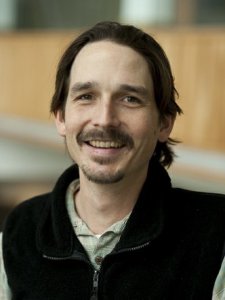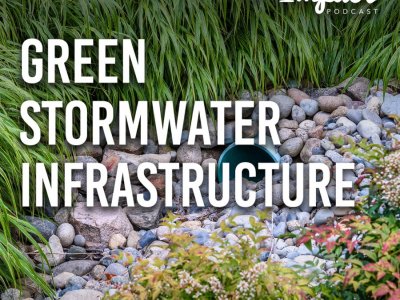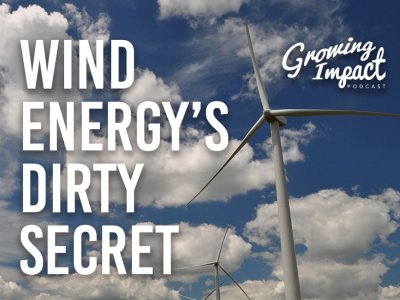What happens to a community or a livelihood when a key resource disappears? In Southwest Madagascar, the farafatse tree, a tree of great importance in that region, appears to be vanishing, and where it is traditionally found seems to be shifting. A team of researchers is investigating this phenomenon in concert with Malagasy communities to identify causes and potential risks for plant life more broadly.
Transcript
INTRO: The tides are turning, and science is going to become more and more, out of necessity, it's going to become more and more collaborative. And especially if you're thinking about how to conserve or deal with major challenges that we're facing as a global society like climate change, we really need to have everyone's buy-in. And the only way you can do that is if you invite people to the table.
HOST: Welcome to Growing Impact, a podcast by the Institute of Energy and the Environment at Penn State. Growing Impact explores cutting-edge projects of researchers and scientists who are solving some of the world's most challenge energy and environmental issues. Each project has been funded through an innovative seed grant program that's facilitated through IEE. I'm your host, Kevin Sliman. On this episode of Growing Impact. I speak with Kristina Douglass, an environmental archaeologist who works with communities and Southwest Madagascar, researching how the impacts of human adaptation affect the environment. And Eric Burkhart an ethnobotanist, who primarily works in Appalachian communities and studies the plant and fungal uses in those communities. We discuss their seed grant project titled “Farafatse: Decline and Livelihood Sustainability in SW Madagascar,” where Douglass and Burkhart are working with communities in Madagascar to figure out why the farafatse tree seems to be disappearing and its distribution on the island appears to be shifting.
HOST: Today, on Growing Impact, we have Kristina Douglass and Eric Burkhart. I'd like to welcome you both to the show.
Kristina Douglass (KD): Thank you so much, Kevin. It's wonderful to be here.
Eric Burkhart (EB): Thank you for having us, Kevin.
HOST: Your project is documenting the ethnobotanical background of a key tree species in Madagascar. How do you pronounce that tree name?
KD: You pronounce it farafatse (fa-RA-fots)
HOST: I should have had you say it, farafatse.
KD: Farafatse.
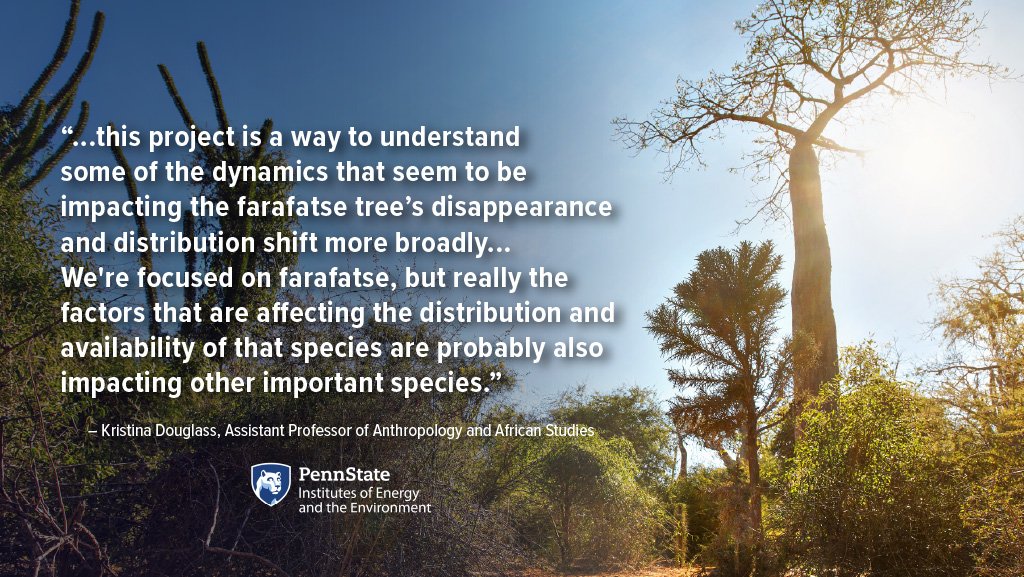
HOST: Alright, I learned a new word today. So with that, with learning about this key tree species and Madagascar, could you first explain what ethnobotany is? And second, why is it essential then to engage with local and indigenous and descendant communities to do this work?
EB: Ethnobotany is essentially a science, it's interdisciplinary, that brings together kind of the human dimension, if you will, into botany. And so the term itself was coined in the late 1800s by an anthropologist and botanist and plant pathologist, kind of a Renaissance man named John Harshberger, who was actually at the University of Pennsylvania. And he coined the term originally to refer to the study of, quite specifically the study of medicinal plants by Indigenous folks in North America. But in the last 100 years has been an evolution within a discipline whereby we don't necessarily just focus on kinds of exotic things like medicinal plants or psychedelic plants used by Aboriginal people in the Amazon. But rather, we look at it a little bit more from a contemporary perspective, where we're interested in all of the different relationships that people have with plants. So these days you'll find people studying everything from the art that people make around plants to the edible medicinal uses to, as I'm working with Kristina on, some of the conservation concerns that we might have around certain taxa that are being exploited. And so I guess different from kind of conservation biology perspective is the fact that we acknowledge people in the relationship first and foremost, and we work with those folks to better understand how we can conserve through interaction, through study with collaborative communities.
KD: I think both of us can speak to this because we both feel very strongly about establishing partnerships with stakeholders, whether it's here in Pennsylvania or in Southwest Madagascar. People around the world rely on their environment and resources within that environment, including plants. And to ensure that the work that we're doing is relevant and meaningful and can provide some kind of positive outcome for stakeholders, key stakeholders, you have to collaborate with people. You know, you can't have this attitude that you as a scientist, you know better. And so you're coming in from the outside and going to kind of determine what direction research should take and what direction and implications policy should have when there are people on the ground, who are the real stakeholders who are relying on this environment, these resources, and who have generations oftentimes worth of knowledge about these particular ecosystems. So it's important on every possible level you can imagine. It makes the science better. It makes the outcomes of science more equitable and meaningful. And overall it makes the whole process much more rewarding and enriching. The tides are turning, and science is going to become more and more, out of necessity, it's going to become more and more collaborative. And especially if you're thinking about how to conserve or deal with major challenges that we're facing as a global society like climate change, we really need to have everyone's buy-in. And the only way you can do that is if you invite people to the table.
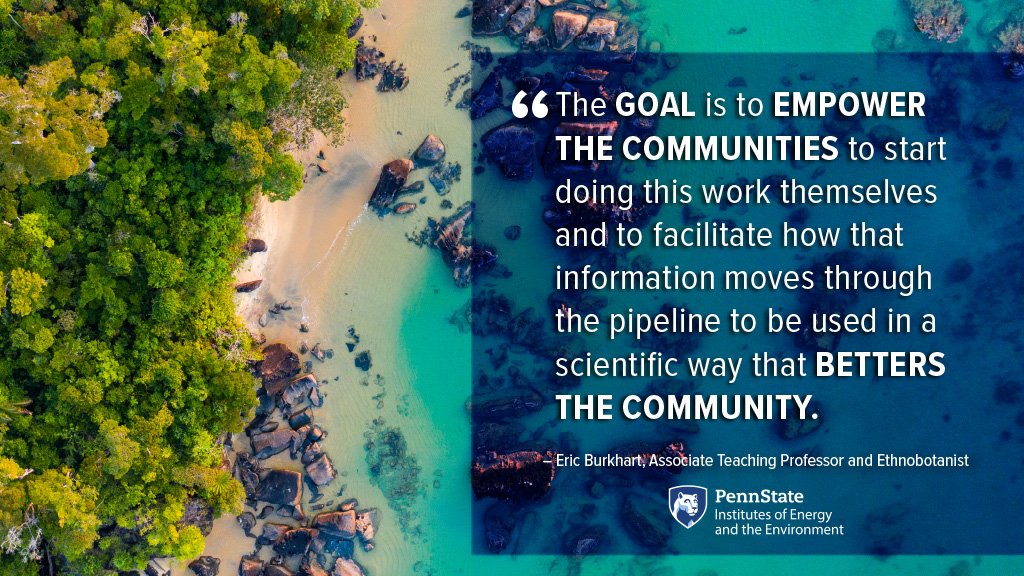
EB: I'll add that from an ethnobotanical standpoint, I mentioned the evolution and the discipline. And on this matter, there's been a profound evolution. And in fact, we're still going through, sorting out how we work with local communities and local people and acknowledge them in the research that we do, everything from involving them upfront in grant proposals, to including them as co-authors in research papers to delivering goods and information and data back to communities so that they can use it to the extent that they want to in directions that benefit them. And so the discipline has evolved from the origins, which is basically a colonizer perspective, right? Where someone comes in from the scientific community and is documenting things that might be of interest to Western scientists and 50 years ago to pharmaceutical companies and other folks who might make millions off of it to today where at least as it's taught and it's practiced by those who have an ethical background, ethnobotany is really about identifying collaborative community communities and working with them to identify what they're interested in, what kind of information they wanted to develop and how they wanted to use it. And so we're more of a facilitator in these days than we are kind of the person who's going to solve the problems, right? And bring in the expert knowledge.
HOST: Could you describe how you and your team are engaging with these different communities?
KD: Well, I'll start with Madagascar, but again, this is work that is happening and in other places too, and I think similar ways, but our collaborations in Madagascar were initiated over ten years ago now, and they have built slowly and steadily over time. So the work that we're able to do with this project is really benefiting from over a decade of relationship building with communities in the Southwest. And we're working in a part of the Southwest called Commune de Befandefa, or the Velondriake Marine Protected Area. These are kind of overlapping areas and essentially these are communities, maybe over 35 different communities, mostly really along the coast, the immediate coastline made up of fishers, marine fishers, folks who are harvesting dry forest products, those folks who are practicing a little bit of farming and herding cattle. And we've been working there as an archaeological team for a long time, trying to understand not just the last few decades, but really the last few millennia worth of people interacting with and shaping and being shaped by their environment. So we've built that collaboration over many years. We've documented hundreds of archaeological sites and extended our understanding of how people have lived in this area back to about 3,000 years. And we've been working more recently with knowledge holders to document more recent histories through oral traditions. And to use that to better understand the archaeological record. But also hopefully to understand where the future lies. What are the big challenges that people are facing? Which is what gave rise to this particular project about farafatse. And to use this cumulative understanding of changes in human environment interactions over thousands of years to hopefully position ourselves to foresee a little bit better what's coming and how we can support communities in adapting to climate change, for example, adapting to changes in resource availability. So that's where the collaborations kind of stem from, is really long-term relationship building with communities in Velondriake.
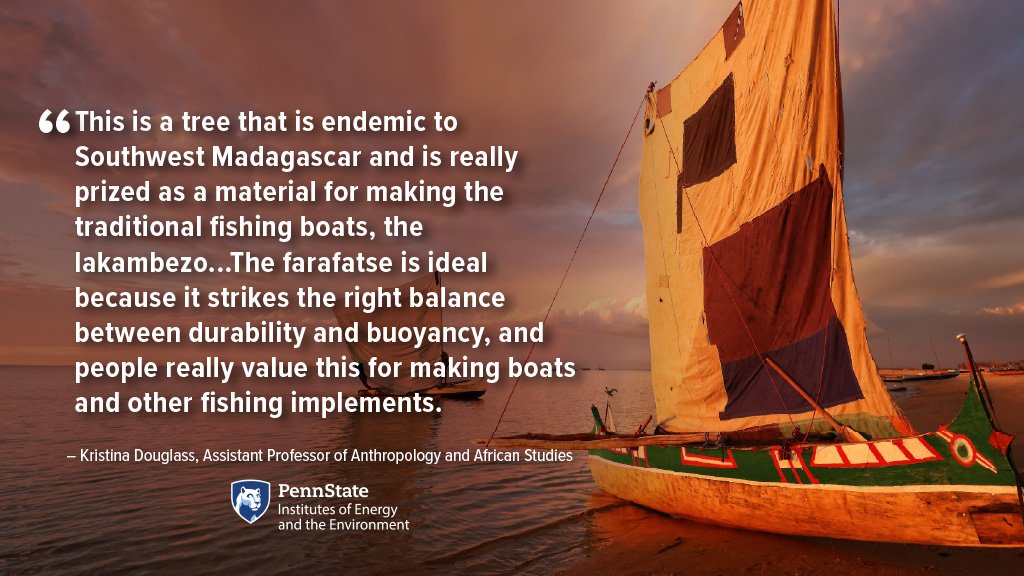
HOST: Tell us about the farafatse.
KD: This is a tree that is endemic to Southwest Madagascar and is really prized as a material for making the traditional fishing boats, the lakambezo. These are large, while some of them are large, some are a little bit smaller depending on what they're being used for. If they're being used for fishing and nearshore waters or they're being used for kind of longer distance seafaring. But they're basically outrigger canoes that have a sail. Farafatse is ideal because it strikes the right balance between durability and also buoyancy. And so people really, really value this for making boats, but also for other fishing implements. And farafatse is a tree that is found again in this part of the Southwest, somewhat inland. So an interesting aspect of the plant is that it actually connects communities. So coastal communities get connected to more inland communities, in part because of the need for both sides to benefit from resources that each stewards. So, communities inland at various points may really rely on and need to exchange and trade with coastal communities for marine products. And likewise, coastal communities often need these dry forest products that are so important for maintaining a fishing livelihood. And what we've learned through oral histories and exchanges with knowledge holders is that farafatse is declining. It's more and more difficult to find the tree. And it's not exactly clear why that's happening and where the trees are still occurring. So people are really, really concerned about this. Coastal communities are really concerned about this and are curious to see whether we can bring together different scientific techniques to help understand what's happening to this valuable species.
HOST: So that's the facet of the tree that you're looking at, the decrease of the tree overall within the area?
KD: Yeah. We're so we're interested in why the tree seems to be disappearing. And also interested in why the tree's distribution so where it is found also seems to be shifting. So not just that the numbers are decreasing, but that the locations where you might find this tree seem to be changing.
HOST: Interesting.
KD: And people are not really sure why that's happening. Although a lot of coastal communities fear that increasing pressure from the outside is impacting that tree, but then also a lot of other species. And in many ways, for us, this project is a way to understand some of these dynamics more broadly. We're focused on farafatse, but really the factors that are affecting the distribution and availability of that species are probably also impacting other important species. But there's a lot of in-migration to the coast now. And we know from oral histories that that tends to occur when inland communities face extended periods of climate downturn, in this case, drought. And that has been happening in Southern Madagascar. Some listeners may have followed the news about the far south of Madagascar and the intense famine that has plagued that region for several years now. And it really is an example of a climate-driven humanitarian disaster. Where, you know, really for the first time you can trace direct links to climate change and then this extreme food insecurity and famine. So it's clear that during times of drought, for example, from the oral histories, it's clear that people tend to move to the coast because there's a perception which may not be an accurate perception now again, due to changes on the coast and in the marine environment from climate change, that there are more resources available from the sea. And so we know that in these times when climate change is impacting inland communities, there often is a migration to the kind of coastal region. And so some of our collaborators think that that may be contributing to what's happening to farafatse. So the disappearance of this tree, and that's part of the project. It's just trying to understand what is actually driving that and see if we can connect again with some of our other work looking at oral histories and even the archaeology, if we can try to connect the dots and put together a picture of what's happening.
HOST: When I read through the abstract, I noted one of your I don't know if it's the primary, but at least one of the objectives for the project is to “preserve and amplify local, indigenous, and descendent knowledge to promote effective conservation and sustainability planning.” So how does studying the tree in light of LID knowledge support those efforts?
EB: I'll jump in here, Kevin, and just say that, so one of the goals that we have with this is that as Kristina mentioned, the species we've selected is really kind of a bellwether, if you will, canary in the coal mine about change extractive resources, including some of the influence from outsiders that might be influencing not just this particular species, but plant resources across the board. And so one of the goals of the research is to more broadly develop what we're calling an ethnobotanical toolkit. So this is a set of resources, if you will, that we can bring to bear from the botanical world, from the anthropological world, scientific methodology and tools that we can bring in and see which ones are in the appropriate tools to start to investigate the status of the species, as well as to better document what might be going on with the broader suite of culturally significant and maybe economically significant plant resources. And so, you know, it's kind of a way that we can start to get our foot in the door with better understanding what these broader influences are on the plant communities in contemporary Malagasy society. As well as to chart a path forward that might involve a combination of conservation and kind of classic conservation-based activities, things like encouraging more horticulture or figuring out the biology of the species that we can better understand the ecology of propagation and management to really looking at markets and market chain, supply chain kind of issues that are coming to bear on some of these species and looking for economic development opportunities, for example, around species that might be easily propagated rather than wild extracted. The toolkit itself includes things like training folks to just understand how we scientifically document plant species as well as identify them definitively, right? And so it's not a matter of us just going in and doing that work, but rather training crews to do it themselves so that they can continue to do that work over a longer period of time. So I can't be there 12 months a year. And the idea is that we don't need to be there. And the goal is to empower the communities to start doing this work themselves and facilitate how that information moves through the pipeline to be used in a scientific way that betters the community.
HOST: Could you discuss any future plans for the project anything that's in the pipeline?
KD: At this point, we've been working remotely, as Eric mentioned, with our community partners and doing a lot of exchanges via Zoom, via Whatsapp calls, via email in all different ways. We've sent materials to the community and to our team on the ground in Madagascar to do a kind of outreach tour where they went to 35 different communities and shared information about the project. And in a way, solicited community input and feedback on the direction of the project. So we'll continue to do that over the next few months. And then the goal would be this fall or early next year for us to be in Madagascar and to really start on some of the other aspects of the projects and the participatory mapping where we're working with community partners to map the distribution of the trees. And then we can also use things like remote sensing tools to help us expand our understanding of the distribution beyond are on the ground survey area. And really, I think in the next year what we would like is to have a picture of where, where are these stands of farafatse are. And be able to work together with community partners then to develop what the next steps should be. I think as Eric put really well, we're trying to empower communities and to give communities the tools that they can use to then ask follow-up questions that are really relevant to them. And my hope also is that by doing this, we will actually start to see possible avenues for future research involving other species. One of the big exciting aspects of this particular project is connecting what's happening in a terrestrial environment to what's happening in a marine environment. Oftentimes we treat them as separate. But really in practice, they're completely interlinked and they are a bigger interlinked kinda coastal system. And I've been studying what's happening with fisheries over the last few thousand years. I think learning more about the plants now is actually going to change some of our research questions with regard to the fishery, which is also really exciting. This is one of the one of the healthiest yet highly threatened reefs in the Western Indian Ocean. And the Western Indian Ocean is experiencing much more rapid warming than the other oceans of the world. So this is an important place for us to focus our energy on understanding what's happening as the climate warms. What's happening to reefs and other marine habitats in the Western Indian Ocean. And what impacts that has on so many communities. You know, almost a 100 million people in the Western Indian Ocean rely on marine resources. And so we're looking at this tree, but this tree is actually going to open up a whole world of new understanding or what's happening with fisheries. So I think this project can go in a lot of different directions. And we're really excited to be on the ground in Madagascar. He talking to people and working with community members to start mapping what's happening and see where this those in the future. But I suspect that it will have a lot to do with clarifying what's happening to the fishery.
HOST: Thank you, Eric and Kristina, for having a great conversation about your project.
KD: Thank you so much Kevin, and for anybody who's interested in learning more about some of our research, you can go to our lab's website, which is obtlab.la.psu.edu.
EB: I'll just said that I can be found on Instagram @PA_botany_and_ethnobotany (instagram.com/pa_botany_and_ethnobotany), where you can find out more about the other work that I've been doing in Appalachia.
HOST: You've been listening to Growing Impact, a podcast the Institutes of Energy and the Environment at Penn State. I've been your host, Kevin Sliman. This has been season two, episode 11. Thank you for listening.


